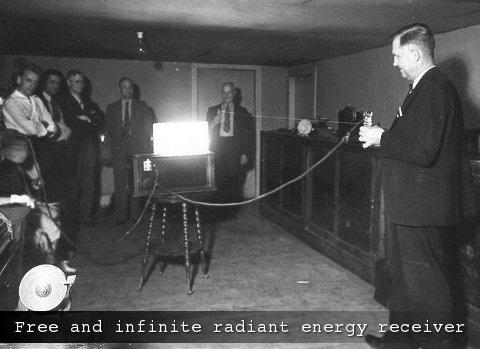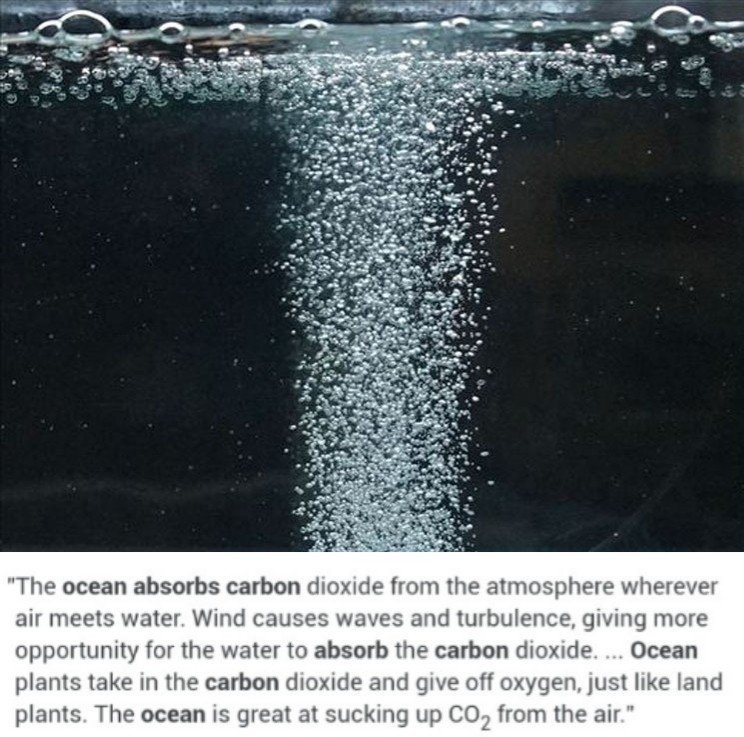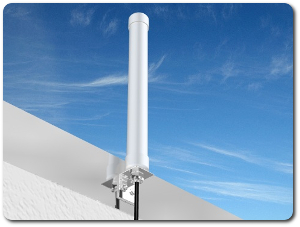Free unlimited pure energy to power the World for another 4 billion years.
Getting Off Oil, World news Friday, October 19th, 2012
1 square meter (m2) free unlimited pure energy receiving antenna
More sunlight energy strikes the Earth in one hour than all the energy consumed on the planet in a year. The sun generates an enormous amount of energy – approximately 3.86×1026 watts of power every second. The Earth receives a fraction of this energy; still, on a clear, cloudless day, 1000 W/m2/s or 1 kW/m2/s of sun generated power reaches the surface of the earth. The sun provides mankind with 1000 watts per square meter (m2) per second or 1 kWh/m2/s in Central Europe, Central Asia, and Canada, approx. 1.7 kWh/m2 in the Mediterranean and approx. 2.2 kWh/m2 in most equatorial regions in African, Oriental, and Australian desert areas. That means more energy from sunlight strikes the Earth in one hour than all the energy consumed on the planet in a year.
The amount of solar radiation reaching the earth’s surface varies greatly because of changing atmospheric conditions and the changing position of the sun, both during the day and throughout the year. Clouds are the predominant atmospheric condition that determines the amount of solar radiation that reaches the earth. Consequently, regions of the nation with cloudy climates receive less solar radiation than the cloud-free desert climates. For any given location, the solar radiation reaching the earth’s surface decreases with increasing cloud cover.
How much free unmetered pure (produces no greenhouse gases or other adverse environmental impact) energy is available? The amount of sun energy striking the Sahara Desert is 8.3 KWh/m2/day. The Sahara Desert is 3.3 million square miles (8.5 trillion m2). That means, in just 1 day, 70.55 trillion KWh of free unmetered pure energy is being transmitted from the sun to the Sahara Desert. If 1% of the Sahara Desert were covered with a radiant energy receiving system, enough energy would be produced to power the entire world.
Solar radiation energy provides mankind with 10,000 times more energy than is actually used worldwide. And it is free for the taking. It is unmetered energy. Yet today solar electricity provides less than 0.1% of the world’s electricity, and solar fuel from modern (sustainable) biomass provided less than 1.5% of the world’s energy. So what is wrong? Why isn’t solar energy technology today powering the World? Solar energy technology is metered technology. It is metered to how much you are willing to pay for their product – just to get a “little” free energy. The price tag of the technology is metering this free energy.
The technology has been available since the 1930s to harness massive amounts of free energy from the sun. Solar panels didn’t achieve this back then and they are not achieving this now. Solar panels harness just a fraction of that energy. If 1 KWh/m2 of sun generated power reaches the surface of the earth every hour of daylight shouldn’t solar panels be harnessing 1 kWh for every square meter (m2) of its surface area? Something is afoul because the average wattage of the top ten manufacturers of solar panel is just 200 watts. Solar panels have solar cells that inefficiently harness that 1 KWh/m2 of sun free unmetered pure energy. Each solar cell can only produce a voltage of about 0.5 volts, whether it’s big or small. Choose big and you pay big bucks for a “little” wattage. Choose small and it isn’t worth using them as they don’t have enough power. The 1930s technology, however, produced energy power to power a steel frame auto mobile – a Pierce Arrow.

Nikola Tesla powered this all steel frame and body 1931 Pierce-Arrow with electrical sun energy that was harnessed using a small power receiver and a simple 6 foot antenna. Not a drop of gasoline or diesel fuel was used. In fact the internal combustion engine was completely removed. No battery banks were used either. This vehicle was driven to speeds of 90 miles per hour with no fossil fuel and just a single 12 volt battery. This infinite and free energy source (sun energy) produces absolutely zero emissions.
Dallas Morning News
The Electric Auto that almost triumphed: Power Source of ‘31 car still a mystery
by A.C. Greene,
January 24th, 1931
It is a mystery car once demonstrated by Nikola Tesla, developer of alternating current, that might have made electrics triumphant.
Supported by the Pierce-Arrow Co. and Westinghouse in 1931, he took the gasoline engine from a new Pierce-Arrow and replaced it with an 80-horsepower alternating-current electric motor with no external power source. From the electric motor trailed two very thick cables, which connected with the dashboard. In addition, there was an ordinary 12-volt storage battery. (”There was a 12-volt Willard battery installed in the car, but it was for the lights only and much too small to run the car. In any case.”) The motor was rated at 80 horsepower. Maximum rotor speed was stated to be 30 turns per second (1800 rpm). A 6-foot vertical antenna rod was fitted into the rear section of the car.
At the appointed time, Nikola Tesla arrived from New York City and inspected the Pierce-Arrow automobile. He then went to a local radio store and purchased a handful of tubes (12 radio vacuum tubes), wires and assorted resistors. A box measuring 24 inches long, 12 inches wide and 6 inches high was assembled housing the circuit. The “power receiver” was then placed into the dashboard of the car and its wires connected to the antenna and to the air-cooled, brushless motor. Two rods 1/4” in diameter stuck out of the box about 3” in length. Tesla began making adjustments on the “power receiver”
Mr. Tesla got into the driver’s seat, pushed the two rods in and stated, “We now have power”. He put the car into gear and it moved forward! This vehicle, powered by an A.C. motor, was driven to speeds of 90 m.p.h. and performed better than any internal combustion engine of its day! One week was spent testing the vehicle. Several newspapers in Buffalo reported this test. When asked where the power came from, Tesla replied, “From the ethers all around us”. (Ethers is Electromagnetic radiation. Radio waves is electromagnetic radiation which has the lowest frequency, the longest wavelength, and is produced by charged particles moving back and forth) Several people suggested that Tesla was mad and somehow in league with sinister forces of the universe. He became incensed, removed his mysterious box from the vehicle and returned to his laboratory in New York City. His secret died with him!
Or did it!
Research data indicates that Tesla’s mystery box may have been nothing more than a simple regenerative vacuum tube radio wave receiver. A type of electronic instrument that receives radio frequencies from thin air and amplifies the received weak radio signal. This simple receiver makes use of vacuum tubes, resistors and wires (the exact same electronic components used by Tesla) to increase the power and/or amplitude of a signal. The main component of Tesla’s “Power Receiver” is the vacuum tube – also called a valve amplifier. The simplest valve amplifier was invented by John Ambrose Fleming while working for the Marconi Company in London in 1904 and named the diode, as it had two electrodes. The diode conducted electricity in one direction only and was used as a radio detector and a rectifier. The diode was most likely used as an instrument to convert AC (alternating current is when the movement of electric charge periodically reverses direction) of RF to DC (direct current is the flow of electric charge is only in one direction) In 1906 Lee De Forest added a third electrode and invented the first electronic amplifying device, the triode, which he named the Audion. This additional control grid modulates the current that flows between cathode and anode.

Tesla used valve amplifiers to harness EM (electromagnetic) radiation (sunlight, x-rays, radio waves, etc.) that were received by the 6-foot vertical antenna rod that was fitted into the rear section of the car. An antenna is a transducer that transmits or receives electromagnetic (EM) energy. In other words, Tesla used the antenna mounted on the rear of the car to convert the freely available electromagnetic energy into usable electrical current.
Tesla bought vacuum tube diodes which are vacuum tubes (valve amplifiers) with two electrodes; a plate and a cathode. A diode is a two-terminal electronic component that conducts electric current in only one direction while blocking current in the opposite direction (the reverse direction). Thus, the diode can be thought of as an electronic version of a check valve. This unidirectional behavior is called rectification, and is used to convert alternating current (AC or the power that comes from your home’s electrical outlets and from the sun) to direct current (DC or the power from a battery). AC power circuit is a sine wave. Audio and radio signals carried on electrical wires (such as an antenna) are also examples of alternating current.
Tesla used the vacuum tubes, wires and assorted resistors to build an EM (electromagnetic) energy receiver/amplifier 24 inches long, 12 inches wide and 6 inches high, with a pair of 3-inch rods 1/4” in diameter sticking out. The pair of rods that Tesla pushed in were used to close (complete) the circuit – like an on/off switch. The rod ends were most likely the positive and negative leads (connections) between the car antenna and and the EM energy receiver/amplifier. By pushing them into the box containing the EM energy receiver/amplifier the connection was completed allowing the EM energy that was received from the air by the antenna to flow through the receiver/amplifier to the electric motor. This is like you would do when you plugged an electric guitar into an amplifier. Like the electric guitar amplifier the signal generated by striking a cord (string) of a guitar would travel from the guitar through the wire connecting the guitar to the amplifier and into the amplifier where the barely audible tone would then be amplified. An electric guitar without an amplifier is essential an air guitar until it is plugged into an amplifier. The amplifier amplifies the sound wave generated by striking the strings of the electric guitar. That is basically how Tesla was able to amplify and convert the invisible electromagnetic energy into electricity to power the AC motor in the 1931 Pierce-Arrow. The word electricity comes from the fact that current is nothing more than electrons moving along a conductor, like an antenna, that have been harnessed for energy. Tesla used an antenna (an electrical conductor) and an amplifier to harness and then amplify free unmetered pure energy.
Why hasn’t anyone revealed this 80 year old secret? Because Tesla built a free energy device. A device that would threaten the oil industry, the nuclear energy industry, the hydro electric power monopoly, the solar panel manufacturing industry and the wind power indusrty. A device that would bankrupt every oil refinery in the World. A device that would literally put an end to Global warming. Disease and illnesses caused by pollution from oil and gas products would simply disappear. If Tesla’s invention was put into mass production the World would never have been involved in wars in the Middle East and Afghanistan, the Exxon Mobil and BP oil spills would never have occurred, and millions of people would still be alive and very healthy today.
Sources for 1000 watts/m2
http://education.gsfc.nasa.gov/experimental/July61999siteupdate/inv99Project.Site/Pages/solar.insolation.html The satellite measured solar constant is 1366 W/m2. Of this energy reaching the top of the atmosphere as much as 70% can be absorbed & reflected by the atmosphere. On a clear day 1000 W/m2 reaches a surface perpendicular to the incoming radiation. This energy varies due to the angle of the incoming radiation and again cloud cover ~ NASA
science.energy.gov/~/media/bes/pdf/reports/files/seu_rpt.pdf states in EXECUTIVE SUMMARY second paragraph – “Sunlight provides by far the largest of all carbon neutral energy sources. More energy from sunlight strikes the Earth in one hour (4.3 × 1020 J) than all the energy consumed on the planet in a year (4.1 × 1020 J). ~ United States Department of Energy.

Tesla wasn’t the first person to use an antenna to harness this enormous amount of EM energy from the sun. Also 80 years Thomas Henry Moray used a slightly different type of antenna to harness this energy. He used what is know then and now as a long wire antenna. Moray connected this antenna to a device he termed the “Moray Valve” which harnessed this free energy and converted it into electricity. The device was able to produce up to 50,000 watts (50 kilowatts) for sustained periods of time in tests witnessed with signed statements by physicists, electrical engineers, and scientists. In one demonstration Moray harnessed enough free energy to power 50 100-watt light bulbs and a 655-watt Hotpoint iron.
Moray knew that the sun was providing Earth and mankind with an enormous amount of free energy. He explained it in terms of horsepower, rather than wattage. Moray stated – “The amount of light and heat (radiant energy) received by the earth from the sun is enormous. On the square yard exposed perpendicularly to the sun’s rays radiant energy is received at the rate of one and one-half horsepower. The average rate for the earth through the periods of darkness as well as of light is three-eights of a horsepower per square yard. This means that 300 horsepower are received on a building 50×150 feet in dimensions. Our planet is receiving energy at the rate of 160,000 horsepower per inhabitant of the earth at the present time.”
Using current technology a very small radiant energy device could be built to produce 300 kilowatts of free unmetered pure energy – sufficient to power buildings and also electric vehicles. All gasoline powered vehicles already have the technology to produce very high energy output. It is called an ignition coil. An ignition coil, which is also known as a spark coil, is an induction coil (transformer) in an automobile’s ignition system. It transforms the car battery’s 12 volts to thousands of volts. Very high voltage is needed to spark the spark plugs. A large ignition coil puts out about 20 kV, and a small one such as from a lawn mower puts out about 15 kV.
Electrical power is measured in watts. In terms of electromagnetism, one watt is the rate at which work is done when one ampere (A) of current flows through an electrical potential difference of one volt (V). W = V x A
The automobile ignition coil is essentially a high-voltage transformer made up of two coils of wire. One coil of wire is called the primary coil. Wrapped around it is the secondary coil. The secondary coil normally has hundreds of times more turns of wire than the primary coil.
Current flows from the low voltage battery (12 volts) through the primary winding of the coil. The primary coil’s current can be suddenly disrupted by the breaker points, or by a solid-state switching device (a transistor).
The coil itself is an electromagnet inductor – creates a voltage. The key to the coil’s operation is what happens when the circuit is suddenly broken by the transistor. The magnetic field of the primary coil collapses rapidly. The secondary coil is engulfed by a powerful and changing magnetic field. This field induces a current in the coils — a very high-voltage current (up to 100,000 volts) because of the number of coils in the secondary winding. The secondary coil feeds this voltage to the distributor via a very well insulated, high-voltage wire.

Another mass produced high energy output device is called a power inverter. A power inverter, or inverter, is an electrical device that changes direct current (DC) to alternating current (AC). In the above power inverter schematic you can see that the system is rather very simple in design. It uses two transistors connected together (a Darlington pair), a couple of resistors and a transformer to step up and convert the low 12 volts DC to a high voltage AC. Inverters sizes are specified in WATTS or KVA (kilo-volt amperes), and range from 50 watts up to 11,000 watts or more – that’s a lot of power. 11 KWh of energy from such a small device.
Short URL: https://presscore.ca/news/?p=7435

 The Halifax International Security Forum was founded in 2009 as a propaganda program within the German Marshall Fund (founded June 5, 1972 by West German Chancellor Willy Brandt) by the Crown in Canada using Crown Corp ACOA & DND funds. The Halifax International Security Forum is a front that is used to recruit top US, UK and Canadian gov and military officials as double agents for Canada's WWI, WWII enemy and wage new Vatican Germany Cold War.
High Treason: s.46 (1) Every one commits high treason who, in Canada (c) assists an enemy at war with Canada, ..., whether or not a state of war exists". Every one who, in Canada assists Canada's enemies wage "piecemeal WWIII" Cold War by organizing, funding and participating in the Germany government politically and militarily benefitting / lead Halifax International Security Forum is committing high treason.
The Halifax International Security Forum was founded in 2009 as a propaganda program within the German Marshall Fund (founded June 5, 1972 by West German Chancellor Willy Brandt) by the Crown in Canada using Crown Corp ACOA & DND funds. The Halifax International Security Forum is a front that is used to recruit top US, UK and Canadian gov and military officials as double agents for Canada's WWI, WWII enemy and wage new Vatican Germany Cold War.
High Treason: s.46 (1) Every one commits high treason who, in Canada (c) assists an enemy at war with Canada, ..., whether or not a state of war exists". Every one who, in Canada assists Canada's enemies wage "piecemeal WWIII" Cold War by organizing, funding and participating in the Germany government politically and militarily benefitting / lead Halifax International Security Forum is committing high treason.
 Please take a moment to sign a petition to
Please take a moment to sign a petition to 









































 1917 Code of Canon Law, Canon 185 invalidates (voids) all papacies since October 26, 1958 due to the fact Cardinal Giuseppe Siri was elected Pope on the Third ballot on Oct 26 1958 but the new Pope Gregory XVII was illegally prevented from assuming the office. A Pope was elected on October 26, 1958. Thousands of people witnessed a new Pope being elected by seeing white smoke and millions were informed by Vatican radio broadcasts beginning at 6:00 PM Rome time on October 26, 1958. The papacy of Francis, Benedict, John Paul II, John Paul I, Paul VI, John XXIII and any and all of their respective doctrines, bulls, letter patents and the Second Vatican Council are all invalidated (having no force, binding power, or validity) by Canon 185 because the 1958 conclave of cardinals elected Cardinal Giuseppe Siri Pope on Oct 26 1958. Cardinal Giuseppe Siri accepted the papacy by taking the name Pope Gregory XVII but was illegally prevented from assuming his elected office.. According to Canon 185 Cardinal Angelo Giuseppe Roncalli illegally assumed the papacy 2 days later by fraud and grave fear, unjustly inflicted against Cardinal Giuseppe Siri who was lawfully elected Pope Gregory XVII. Because no Pope has been lawfully elected since October 26, 1958 the Holy See (la Santa Sede/Seat) remains vacant.
1917 Code of Canon Law, Canon 185 invalidates (voids) all papacies since October 26, 1958 due to the fact Cardinal Giuseppe Siri was elected Pope on the Third ballot on Oct 26 1958 but the new Pope Gregory XVII was illegally prevented from assuming the office. A Pope was elected on October 26, 1958. Thousands of people witnessed a new Pope being elected by seeing white smoke and millions were informed by Vatican radio broadcasts beginning at 6:00 PM Rome time on October 26, 1958. The papacy of Francis, Benedict, John Paul II, John Paul I, Paul VI, John XXIII and any and all of their respective doctrines, bulls, letter patents and the Second Vatican Council are all invalidated (having no force, binding power, or validity) by Canon 185 because the 1958 conclave of cardinals elected Cardinal Giuseppe Siri Pope on Oct 26 1958. Cardinal Giuseppe Siri accepted the papacy by taking the name Pope Gregory XVII but was illegally prevented from assuming his elected office.. According to Canon 185 Cardinal Angelo Giuseppe Roncalli illegally assumed the papacy 2 days later by fraud and grave fear, unjustly inflicted against Cardinal Giuseppe Siri who was lawfully elected Pope Gregory XVII. Because no Pope has been lawfully elected since October 26, 1958 the Holy See (la Santa Sede/Seat) remains vacant.
 Hold the Crown (alias for temporal authority of the reigning Pope), the Crown appointed Governor General of Canada David Lloyd Johnston, the Crown's Prime Minister (servant) Stephen Joseph Harper, the Crown's Minister of Justice and Attorney General Peter Gordon MacKay and the Crown's traitorous military RCMP force, accountable for their crimes of treason and high treason against Canada and acts preparatory thereto. The indictment charges that they, on and thereafter the 22nd day of October in the year 2014, at Parliament in the City of Ottawa in the Region of Ontario did, use force and violence, via the staged false flag Exercise Determined Dragon 14, for the purpose of overthrowing and besieging the government of Canada contrary to Section 46 of the Criminal Code. In a society governed by the rule of law, the government and its officials and agents are subject to and held accountable under the law. Sign the online
Hold the Crown (alias for temporal authority of the reigning Pope), the Crown appointed Governor General of Canada David Lloyd Johnston, the Crown's Prime Minister (servant) Stephen Joseph Harper, the Crown's Minister of Justice and Attorney General Peter Gordon MacKay and the Crown's traitorous military RCMP force, accountable for their crimes of treason and high treason against Canada and acts preparatory thereto. The indictment charges that they, on and thereafter the 22nd day of October in the year 2014, at Parliament in the City of Ottawa in the Region of Ontario did, use force and violence, via the staged false flag Exercise Determined Dragon 14, for the purpose of overthrowing and besieging the government of Canada contrary to Section 46 of the Criminal Code. In a society governed by the rule of law, the government and its officials and agents are subject to and held accountable under the law. Sign the online  Two of the most obvious signs of a dictatorship in Canada is traitorous Stephen Harper flying around in a "military aircraft" and using Canadian Special Forces "military" personnel from JTF2 and personnel from the Crown's traitorous martial law "military" RCMP force as his personal bodyguards.
Two of the most obvious signs of a dictatorship in Canada is traitorous Stephen Harper flying around in a "military aircraft" and using Canadian Special Forces "military" personnel from JTF2 and personnel from the Crown's traitorous martial law "military" RCMP force as his personal bodyguards.





































Solar panel reflecting sunlight energy as vividly demonstrated in this article on how solar panel works.
Solar panels should work to absorb as much of the 1KW/m2 of free sun energy as possible, not deflect it. Also notice in the image that the “miniscule” amount current is being passed through a regulator, thereby limiting its potential. A voltage regulator controls the amount of voltage that is flowing in a circuit. It “limits” the output. What that means is that no matter how many volts your solar panel is able to put out it will only output a preset voltage. If the voltage regulator is 5 volts and your panel is harnessing 12 volts or 200 volts of free sun energy you will always only get 5 volts.
Lastly, there is more deflecting glass and dielectric insulating material than energy conducting material in these solar cells. Very thin strips of conducting material can of course only harness very little energy. Replace the thin strips with thin sheets and you increase the capacitance of the solar cells. A thin sheet of conducting material has a much greater capacitance then very thin strips.
There is actually a 200 volt positive charge in the air that an antenna or EM panel can tap into. Physicists have determined that six feet above the ground (above head height) the air is charged with more than 200 volts positive in respect to the ground. Your electrical outlets and home appliances are charged with 120 volts positive.
Earth is always referred to as ground when explaining electrical circuitry. Electrical current flows to ground or earth. The Earth – the ground we stand on, walk on, sleep on , play. run on, drive on and build on is negative electrically charged and acts as a spherical capacitor. The Earth has a net negative charge of between 400,000 and 5000,00 coulombs, while an equal and positive charge resides in the atmosphere – Canada’s Department of Natural Resources states on their website – http://cfs.nrcan.gc.ca/pages/160.
“There is about a 300 000 volt (V) potential difference between the Earth’s surface and the electrosphere, which gives an average electric field strength of about 6 V/metre (m) throughout the atmosphere. Near the surface, the fine-weather electric field strength is about 100 V/m..” Average height of a man is 6 feet or 2 meters so 100 V/m x 2 meters = 200 Volts 6 feet off the ground.
Wikipedia also states that Earth’s atmosphere is electrically charged. They disclose this with this statement – “The measurements of atmospheric electricity can be seen as measurements of difference of potential between a point of the Earth’s surface, and a point somewhere in the air above it. The atmosphere in different regions is often found to be at different local potentials, which differ from that of the earth sometimes even by as much as 3000 Volts within 100 feet (30 m). The electrostatic field and the difference of potential of the earth field according to investigations, is in summer about 60 to 100 volts and in winter 300 to 500 volts per meter of difference in height, a simple calculation gives the result that when such a collector is arranged for example on the ground, and a second one is mounted vertically over it at a distance of 2000 meters and both are connected by a conducting cable, there is a difference in potential in summer of about 2,000,000 volts and in winter even of 6,000,000 volts and more.” http://en.wikipedia.org/wiki/Atmospheric_electricity
What both Wikipedia and the Canadian government are stating is exactly what Nikola Tesla and Dr. Thomas Henry Moray stated 80 years ago and tried to educate the World that we are surrounded by a sea of energy. We need only know how to tap into it to power everything we use. Moray even developed and successfully demonstrated a device that harnessed this free energy and powered 35 100-watt lamps and a 1200-watt iron simultaneously.
Moray’s device used twenty-nine stages of his special detector valves. His device was based on the discovery of a mixture that would act as a one-way gate for the high frequency oscillations of electromagnetic energy, so that the energy could go through the material more readily in one direction than another. Electrons could flow in each valve, but was prevented from flowing back out.
What electrical device only allows electrons to flow in one direction? 80 years ago it was a vacuum tube diode. now rarely used except in some high-power technologies and by enthusiasts. Today it is known the World over as a diode.
Vacuum tube diode
The most common function of a diode is to allow an electric current to pass in one direction (called the diode’s forward direction), while blocking current in the opposite direction (the reverse direction). Thus, the diode can be thought of as an electronic version of a check valve. This unidirectional behaviour is called rectification, and is used to convert alternating current to direct current, including extraction of modulation from radio signals in radio receivers.
I don’t know about you but it would appear that Moray used vacuum tube diode (now called a semiconductor diode) as his special detector valves to tap into and harness the free electrical energy that surrounds us – 100 volts/metre of free energy.
Solar panel manufacturers need only to modify their existing design and their panels will be far more efficient (harness a lot more free sun energy) than they are now. Simply by putting a curve in their panels (see accompanying design modification image above) the sun rays will fall perpendicular to the panel throughout the day.
Replace the reflective glass with a thin sheet of matt black enamel painted (exterior face only) aluminium and mount the curved solar panel facing south and it will harness the sun’s free energy from the time the sun rises in the east and sets in the west.
What is wrong with this picture? Can you see why solar panels are useless in regards to harnessing the 1KW/m2/s of free sun energy? Looks nice, but only produces a measly 15 watts. Measures 42.5″ x 1.5″ x 16″ (680 sq inches of surface area or 0.438709 m2) and 11 lbs. So shiny you can see your reflection in it. Get it? They aren’t solar energy collectors they are solar energy reflectors.
The law of reflection says that for specular reflection the angle at which the wave is incident on the surface equals the angle at which it is reflected. Solar panels are mirrors – reflecting the sun energy. A mirror provides the most common model for specular light (mirror-like) reflection, and typically consists of a glass sheet with a metallic coating where the reflection actually occurs. Reflection is enhanced by the metal of the solar cells by suppression of wave propagation beyond their skin depths. Reflection also occurs at the surface of transparent media, such as the glass top of all solar panels. Because all solar panels are stationary in relation to the moving sun energy is predominately being reflected and the remainder is refracted. Energy is only being absorbed in one incident only – when the sun is “exactly” perpendicular to the solar panel’ reflective surface. At all other times sun energy is either being reflected or refracted.
The solution is to make a sun energy receiver than doesn’t reflect at all. Like my design – the EM energy receiving antenna – image in previous comment. The m2 antenna surface is matt black. Black absorbs the light and when it does this it is also absorbing energy – throughout the day. It doesn’t matter where the sunlight is coming from matt black will not reflect the sun’s free energy. Black absorbs all the visible radiation that falls on it.
Secondly, get rid of the glass. Glass is an insulator. An electrical insulator is a material whose internal electric charges do not flow freely, and which therefore does not conduct an electric current, under the influence of an electric field. Insulators are used in electrical equipment to support and separate electrical conductors without allowing current through themselves. Solar panels and their solar cells are made of reflective glass which is why they are useless for harnessing the sun’s free unmetered pure energy.
Everyone in the World could get off the metered power grid if every exterior square meter surface receives 1 KWh of energy. The above © antenna design has a surface area of 1 square meter (m2). Using the technology of Tesla and Moray it is conceivable for such an antenna to receive 1 kWh/m2 of sun energy and other free electromagnetic (EM) energy, 24hr a day, 7 days a week, 365 days of the year, for as long as the life of the antenna.